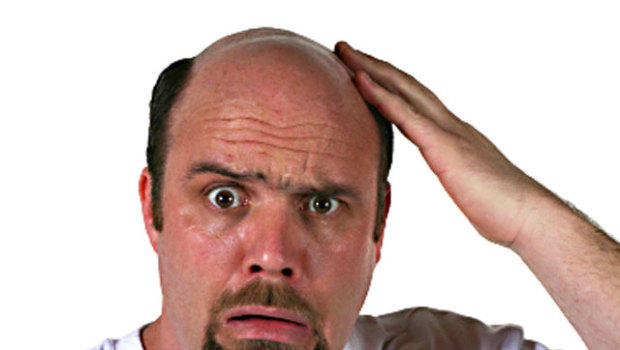It’s time to cast off some myths and reveal some of the facts around androgenic alopecia (“male pattern baldness”).
First off, despite its common name, this condition can impact both men and women, and is by far the most common form of hair loss seen clinically.
Up to 70% of men and 40% of women may be affected in their lifetime.
Why is it so prevalent?
The reason for its prevalence in men is due to the fact that hair follicles respond to androgens (male hormones, though women have some too); in those cases where the follicles are overly sensitive to androgens, this will trigger the hair follicles to shrink over time and prevent normal hair production.
This happens when an enzyme called 5-alpha-reductase converts testosterone in the follicle to the far more potent dihydrotestosterone (DHT).
Women tend to lose hair more diffusely, while men demonstrate fairly consistent patterns.
Why?
Because, the density of androgen receptors in hair follicles varies with location.
Hair follicles at the back and sides of the head have a lower number of androgen receptors, and therefore have little or no response to DHT.
Is it genetic?
And no more can mom’s side of the family take all the blame for inheriting “the gene.”
It turns out that, while it’s true that one gene that determines male pattern baldness is on the X chromosome (which a son receives from his mother), the condition is complex.
The complete genetic picture isn’t clear, but it is known that other genes not found on the X chromosome play a role and can be inherited from either or both sides of the family.
In addition to this, non-genetic factors can also cause or aggravate hair loss such as excess androgens in the body, nutrient deficiency, thyroid disorders, stress, mechanical/chemical overtreatment of hair, and poor blood sugar control (this increases insulin which increases 5-alpha-reductase activity).
The good, and bad news
There is good and bad news about hair loss prevention.
The good news is that it can be preventable and even partially reversible when the major contributing factor – DHT – is dealt with.
The most common medications used are 5-alpha-reductase inhibitors (Ie: finasteride or “Propecia”/”Proscar”) which reduce DHT levels in the scalp, and the topical prescription drug minoxidil (“Rogaine”) which promotes hair re-growth.
Like many medications however, the bad news is there are potential side effects, and in this case, ones which could be life threatening.
There are risks of serious forms of prostate and breast cancer in men, in addition to “Post-Finasteride Syndrome”, a condition that can persist in men who have taken finasteride, and is characterized by sexual, neurological, and physical side effects such as loss of libido, orgasm disorders, erectile dysfunction, depression, suicidal thoughts, Peyronie’s disease and abnormal breast enlargement.
Impairing 5-alpha-reductase activity may be a big mistake because it is tied to a multitude of functions in the body including the regulation of sexual differentiation, neuroprotection, memory enhancement, anxiety, sleep and stress, among others.
What can you do to prevent, or treat male pattern baldness?
Our environment impacts how our genes are expressed and our health outcomes…so what can you do to prevent or treat male pattern baldness?
- Drop the weight and exercise. This increases insulin sensitivity, thereby helping to decrease DHT production.
- Eat a whole foods diet, dense in greens and veggies, and cut the sugars and carbohydrates. Bread, pasta, baked goods…grains in general will elevate blood sugar. Far beyond the esthetics of hair, blood sugar control is crucial for disease prevention and a nutrient rich diet will provide all the necessary building blocks for healthy hair, and a healthy body.
- See a licensed Naturopathic Doctor (ND) with the medical training to appropriately assess your whole health profile and develop an individualised treatment plan that will optimize your genetic potential and wellbeing. Depending on severity and the variables influencing hair loss, the condition may be prevented, slowed, stopped or sometimes reversed. An ND will select from the various support options available, and which are indicated for your unique health requirements.
But make no mistake..there are no miracle cures against fierce genetic male pattern baldness that has progressed.
So if embracing it or joining the shaved head trend is not your cup of tea, options are limited to expensive transplant surgery or hair pieces.
Cell-mediated injection therapies are being researched and on the horizon.
My advice?
Avoid the risky drugs and focus on the variables you can control to achieve whole mind- body wellness.
Hair never has and never will make a man.

I bought (Peters/Wadell) for my huanbsd about four months ago. I can say that this book is very well researched and clears up a lot of misconceptions about hair loss. My huanbsd began supplementing his diet with flax seed oil and now has far fewer hairs left in the drain screen after a shower.